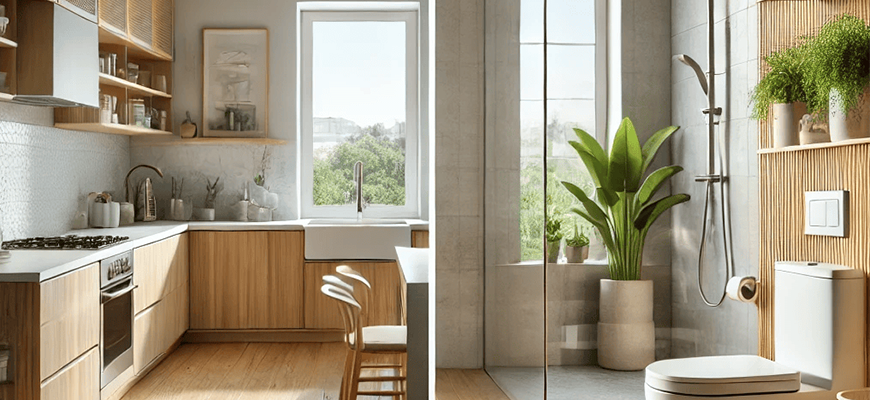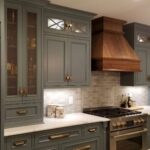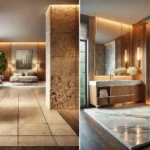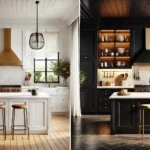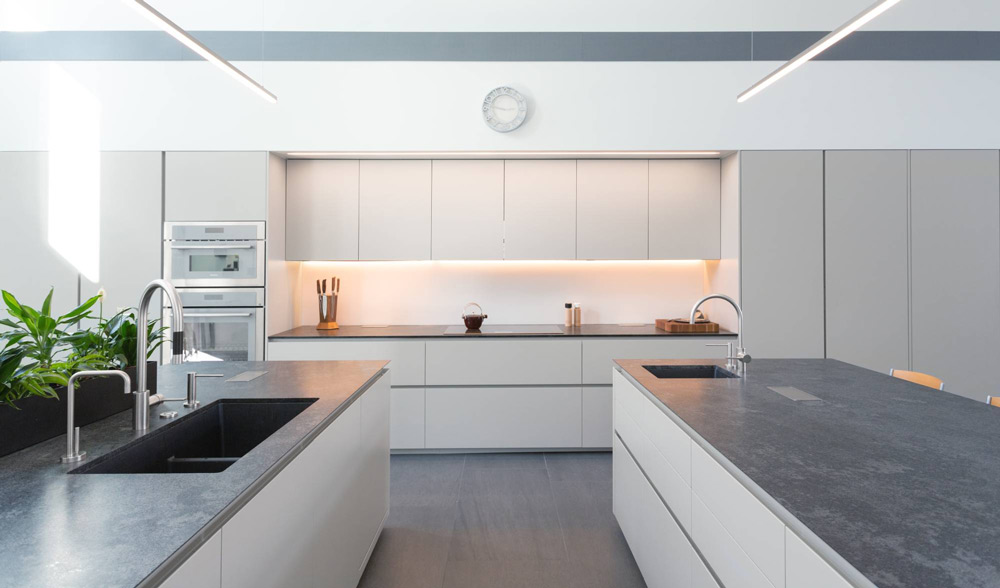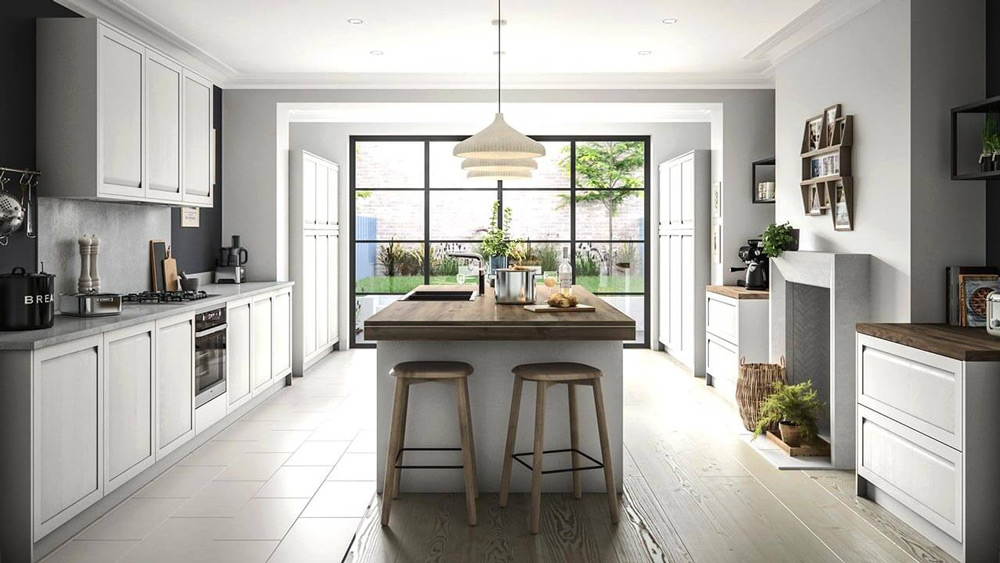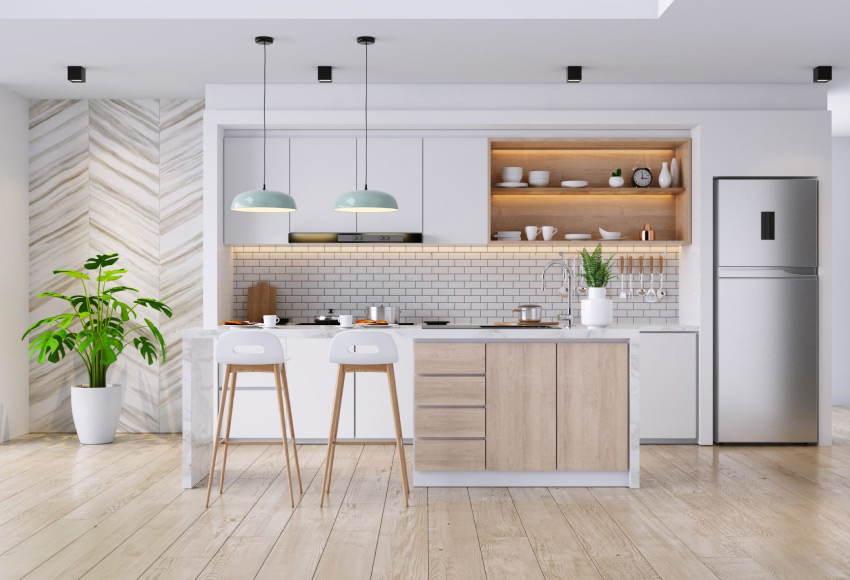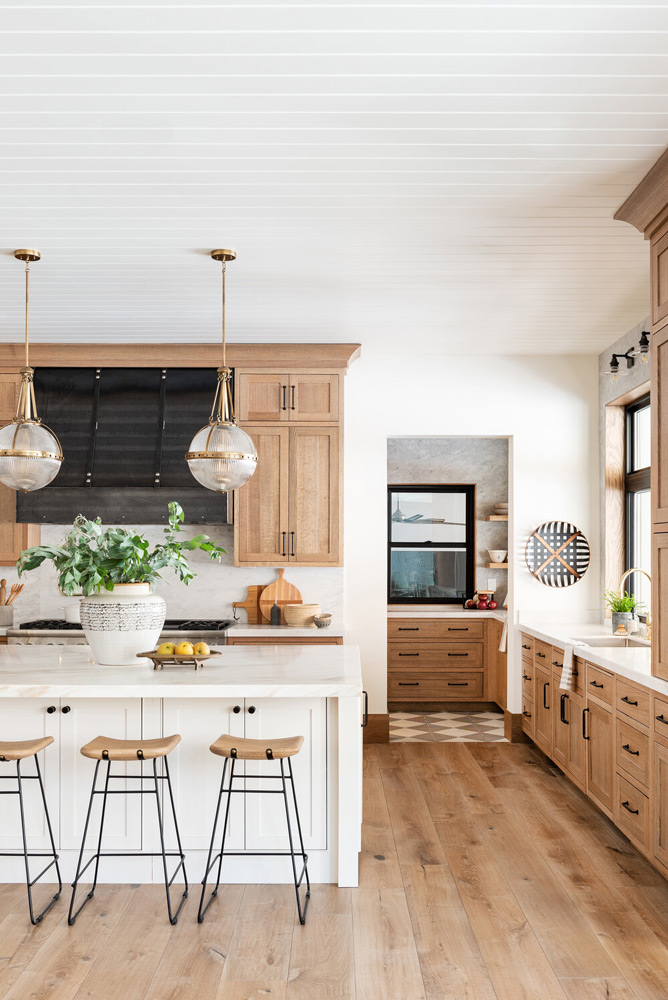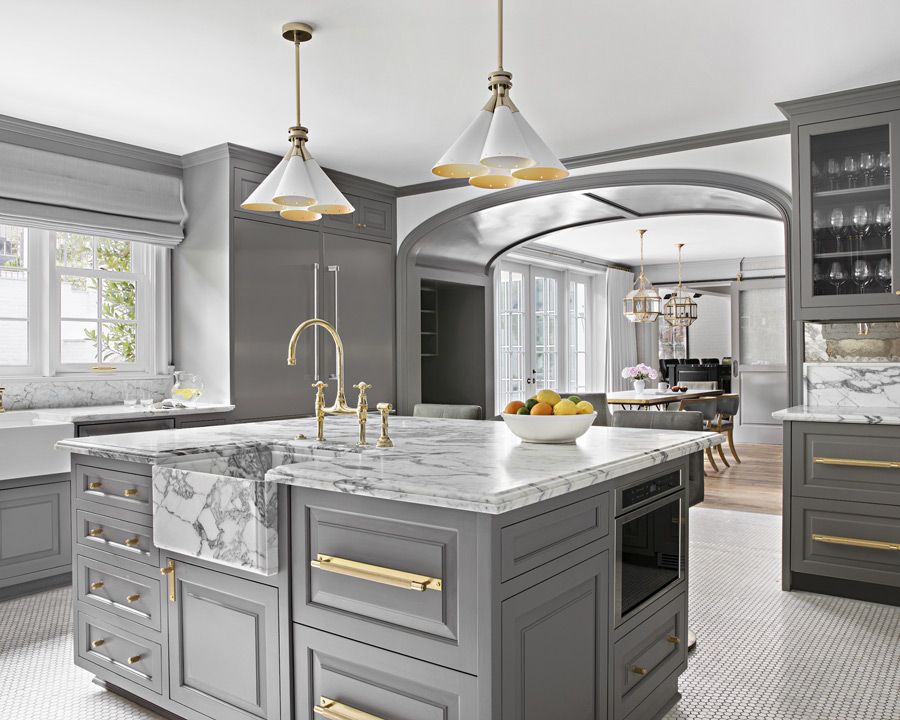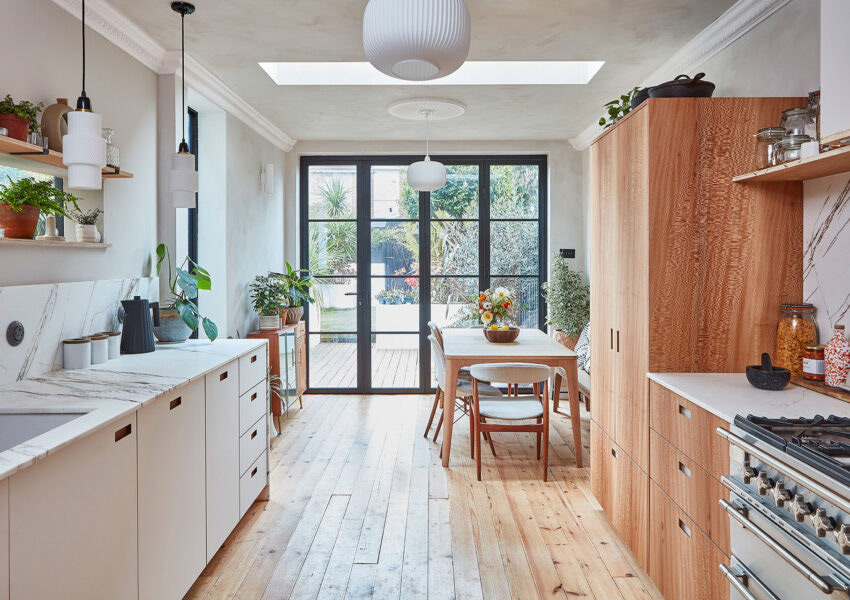Cabinet finishes play a pivotal role in defining your kitchen’s aesthetics and functionality. Whether you prefer the natural charm of wood, the sleek appearance of high-gloss paint, or the practicality of laminates, this guide will help you make an informed decision.
1. Natural Wood Finishes
Natural wood finishes highlight the grain and texture, offering timeless appeal.
Popular Types:
- Stained Wood: Enhances natural grain while adding color. Options range from light browns to dramatic dark walnuts.
- Lacquered Wood: Adds a protective coating in matte, satin, or glossy sheens.
- Teak Oil or Wax Finishes: Provide a soft, natural luster while protecting against moisture.
Pros:
- Showcases wood’s natural beauty.
- Durable and can be refinished over time.
Cons:
- Requires regular maintenance to avoid wear.
2. Painted Finishes
Painted cabinets offer versatility, allowing for any color choice, from subtle neutrals to bold hues.
Types of Paint:
- Matte Paint: Velvety texture for a subtle, modern look.
- Semi-Gloss and Gloss: Durable and easy to clean, ideal for kitchens with high traffic.
Pros:
- Covers imperfections for a sleek, uniform appearance.
- Easy to repaint if styles change.
Cons:
- Prone to chipping over time in high-use areas.
3. Laminates for Modern Durability
Laminates are cost-effective and resistant to wear and tear, making them ideal for busy households.
Styles:
- High-Gloss Laminate: Reflective and modern, perfect for contemporary designs.
- Woodgrain Laminate: Mimics the appearance of real wood at a lower cost.
Pros:
- Scratch-resistant and easy to clean.
- Affordable and available in countless patterns and colors.
Cons:
- Can delaminate over time if exposed to excessive moisture.
4. Glazing and Distressing
Add character to your cabinets with glazing or distressing techniques.
Techniques:
- Glazing: A translucent layer applied over paint or stain to enhance details.
- Distressing: Sanding or intentionally marking the surface to achieve a rustic, aged look.
Pros:
- Unique, custom aesthetic.
- Complements vintage or farmhouse styles.
Cons:
- Requires careful application for a professional finish.
5. Choosing the Right Finish
Considerations:
- Durability: Glossy finishes and laminates are great for high-traffic areas.
- Style: Painted finishes offer versatility, while wood stains add natural warmth.
- Maintenance: Glossy and semi-gloss options are easier to clean.
- Budget: Laminates and painted finishes are more budget-friendly compared to custom wood stains.
Transform Your Kitchen with Tivoli Design Group
At Tivoli Design Group, we understand the importance of cabinet finishes in creating your dream kitchen. Our expert team will guide you through selecting finishes that complement your style and meet your needs.
Contact us today for a consultation, and let’s turn your vision into reality!
FAQs
- Which finish is best for durability?
Laminates and glossy paints are highly durable and easy to maintain. - Can I mix finishes in my kitchen?
Yes! Combining wood stains with painted finishes adds depth and visual interest. - Are distressed finishes durable?
Distressed finishes are primarily aesthetic but can be sealed for added durability. - How do I clean laminate finishes?
Use a damp cloth and mild detergent to maintain laminate finishes. Avoid abrasive cleaners. - How often should I refinish natural wood cabinets?
Typically every 5-7 years, depending on wear and tear.

